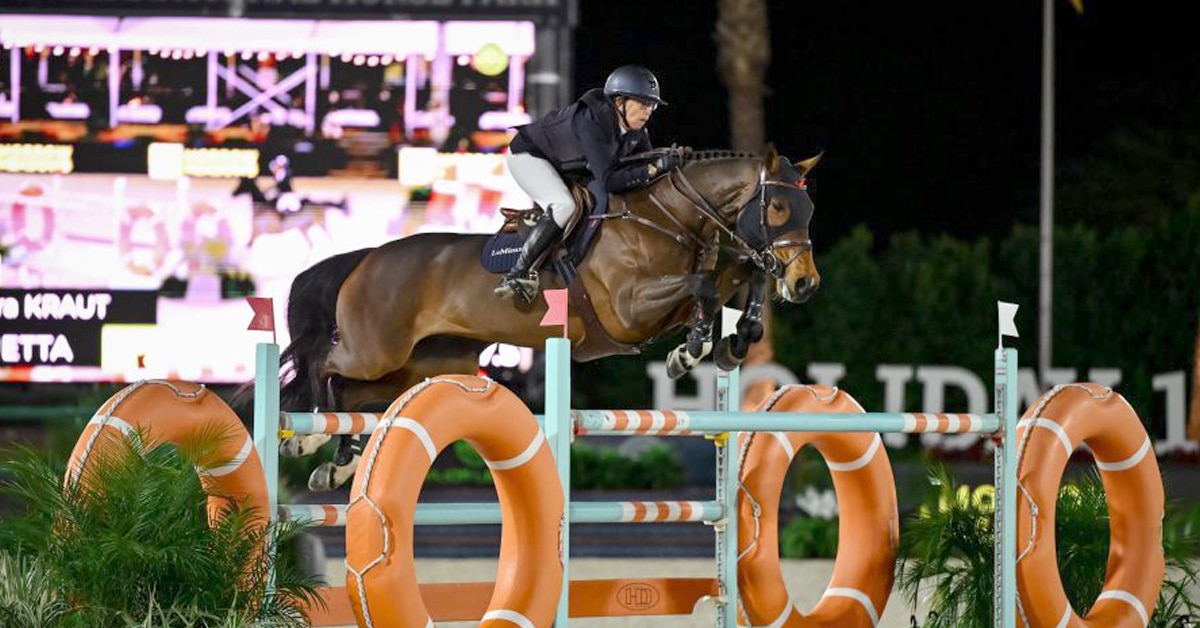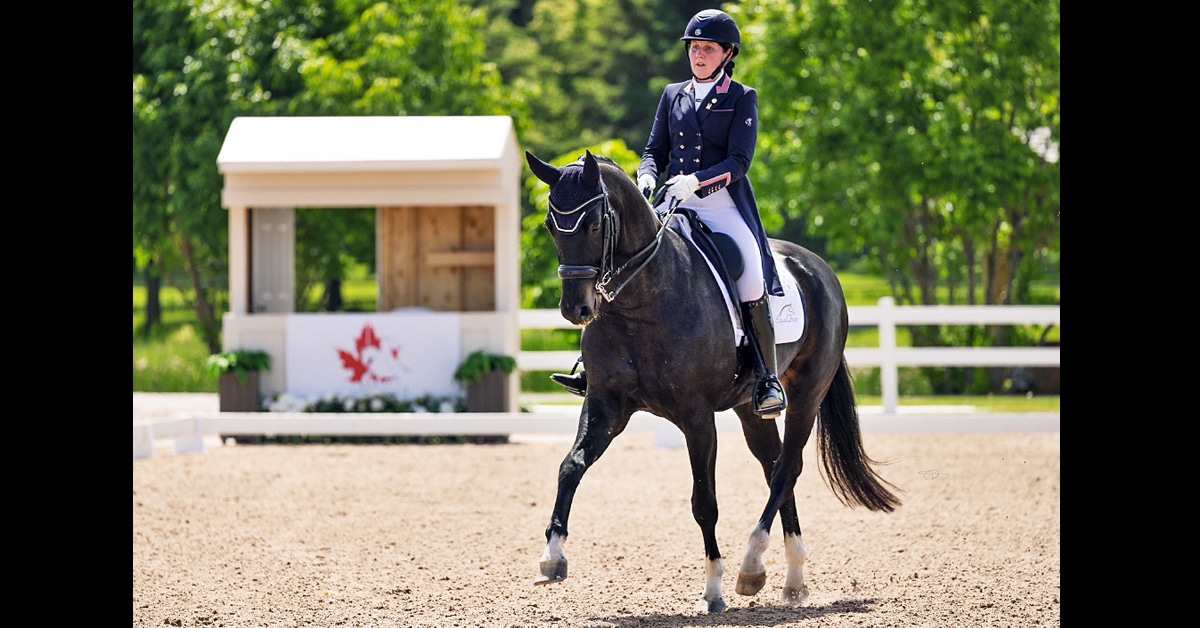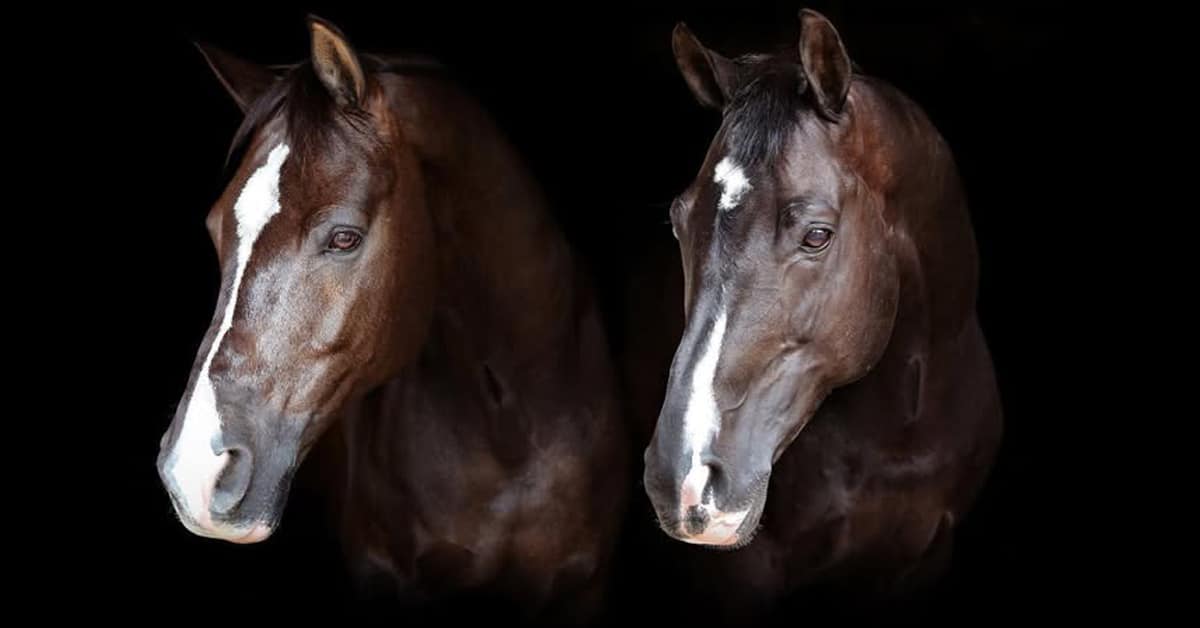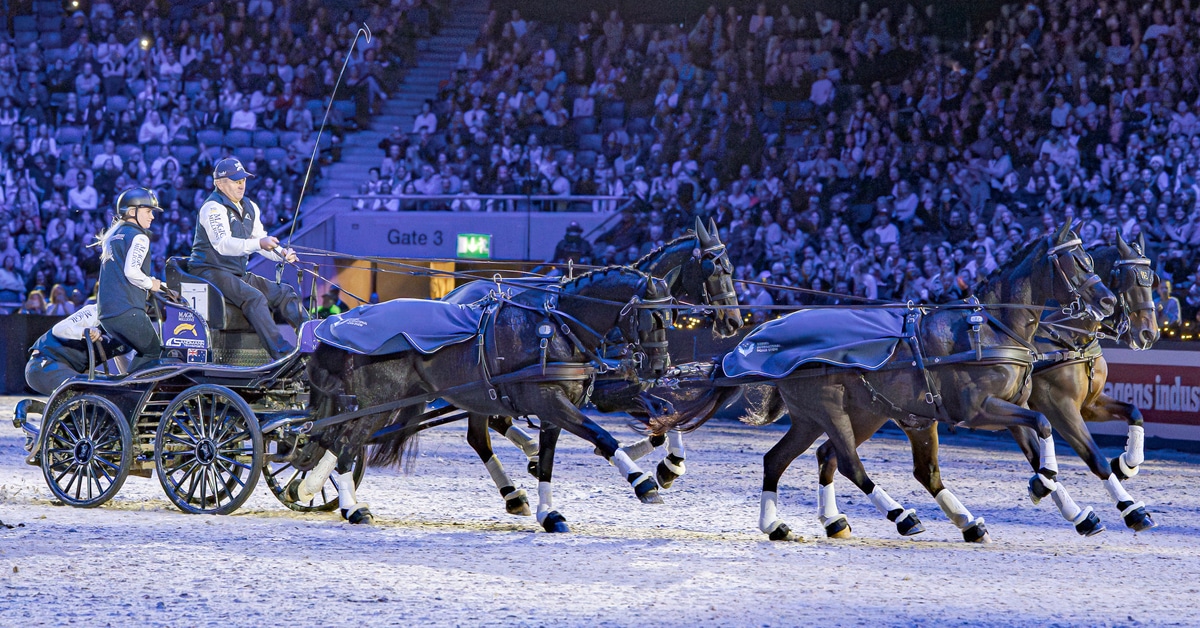The first day of jumping saw 46 combinations and nine teams contest the course set by Brazil’s Marina Azevedo, the first female jumping course designer in the history of the Pan American Games. The first day of Championship competition starts with a Table C speed class where faults are converted to time and penalty points assessed based on the fastest time on course. With four riders, all teams except Uruguay can drop their worst score.
Eight teams are vying for the three Olympic team qualifying spots available at this competition. Defending team and individual champions Brazil have already confirmed their spot in Paris following their 4th-place finish at the Longines FEI Jumping Nations Cup Final 2023 in Barcelona. This leaves the USA as the top contendors, but Canada will also have to head off Colombia, Argentina and Mexico who have all fielded strong teams.
Canada finished the first day in third with 9.62 faults behind Brazil in first with 4.32 and Colombia in second with 7.29. One of the many surprises of the day was to see the USA in 5th with 12.37 faults behind Argentina in fourth with 12.01 faults. While McLain Ward on Contagious and Laura Kraut on Dorado 212 were both clear, rails by Kent Farrington on Landon and a refusal by Karl Cook’s Caracole de La Roque dropped them in the ranks.
Canadian riders were disappointed to have rails, but their times were fast enough to bolster their overall score.

Beth Underhill and Nikka Vd Bisschop. (Cara Grimshaw photo)
Beth Underhill and Nikka Vd Bisschop were first on course and dropped one rail. “It was honestly just a little unlucky. She felt great. I left the ground and I thought she was fine,” Underhill commented after adding that she perhaps lead the mare right in the air to make the turn after and that could have been the difference.

Mario Deslauriers and Emerson. (Cara Grimshaw photo)
Mario Deslauriers and Emerson were the second to go and also lowered one jump. “He kind of made a shifty type jump,” explained Deslauriers about the rail. “He’s a bit of a rogue to ride, he’s not the most steady horse in the world. You kind of have to take what you get and go with him a little bit. He’s super careful, scopey, and he’s brave.”
Amy Millar and Truman were next to go, scoring a clear round. “I was feeling fairly calm today, I didn’t mind the course,” she said when asked if she felt any pressure going in. “I just kept telling myself that I’ve been riding this horse for a long time, and we’ve done a lot of things. So I just kept telling myself that we’ve done harder things and we’ve got this and we know how to do this.

Tiffany Foster and Figor. (Cara Grimshaw photo)
“Actually, what I achieved was exactly my goal,” she added. ”I wanted to be around 76 seconds [their time was 76.29]. I knew that I’m not going to win but if we stay on just a couple of faults and jump clear tomorrow then that puts us in a really good position.”
“Championships are always interesting. Unexpected things happen, so I’ve seen some unexpected things happen,” she said, laughing. “Coming in and doing the first day as a speed always adds a different element to the whole thing, too. So that shakes things up a bit. I also think that historically, a lot changes tomorrow. You have to keep yourself in contention today and then tomorrow should be our strong suit. We have scopey, clear round jumping machines on our team.”
Last on course for Canada was Tiffany Foster and Figor, who also had a rail. “It sounds silly, but this horse is very sensitive,” she explained after noting that she is careful to quickly start her course when she’s in the ring. “Sometimes there are things that are beyond your control. The guy before me had broken a rail, so I had to trot around for two minutes. I could feel him just building and building and building as I was trotting.” The extra time made Figor more tense than usual, so Foster took a more conservative approach to the course than she would have liked.
“He’s definitely a horse that gets better as you go. I’m sure tomorrow will be even better than today.”
Competition continues tomorrow over two rounds that will determine the team medals. The individual final will be on Friday.
Results here.
More News










